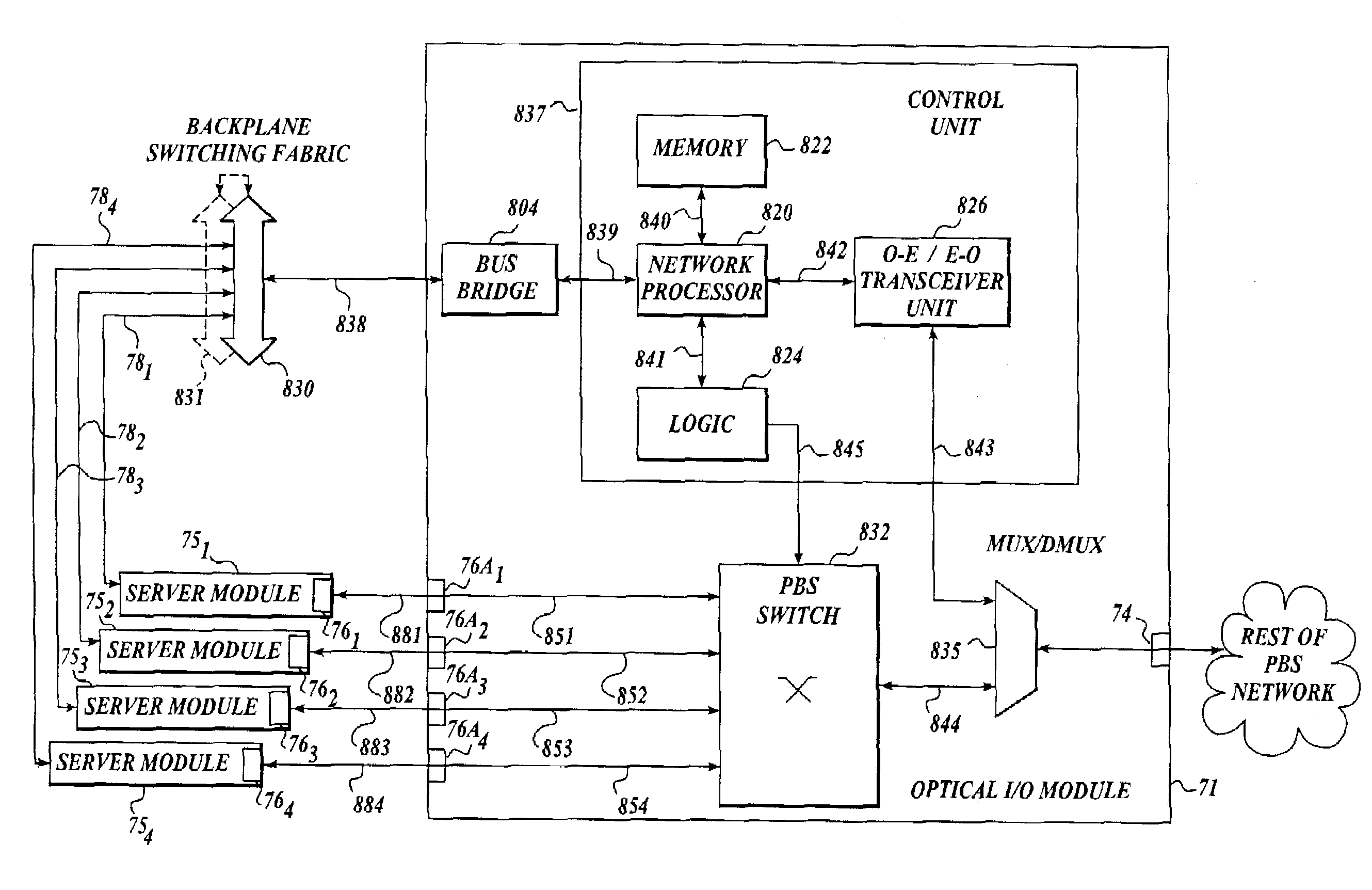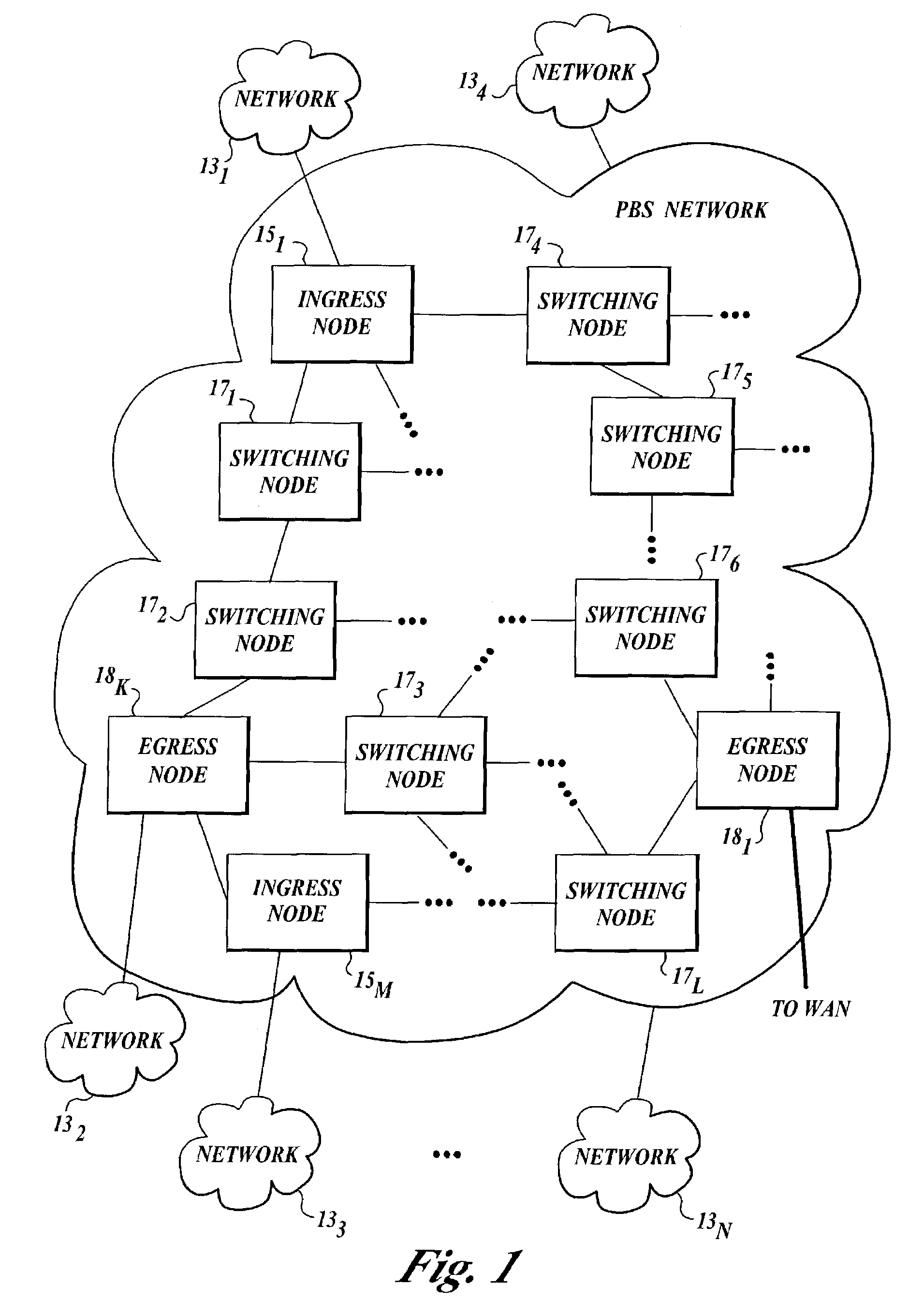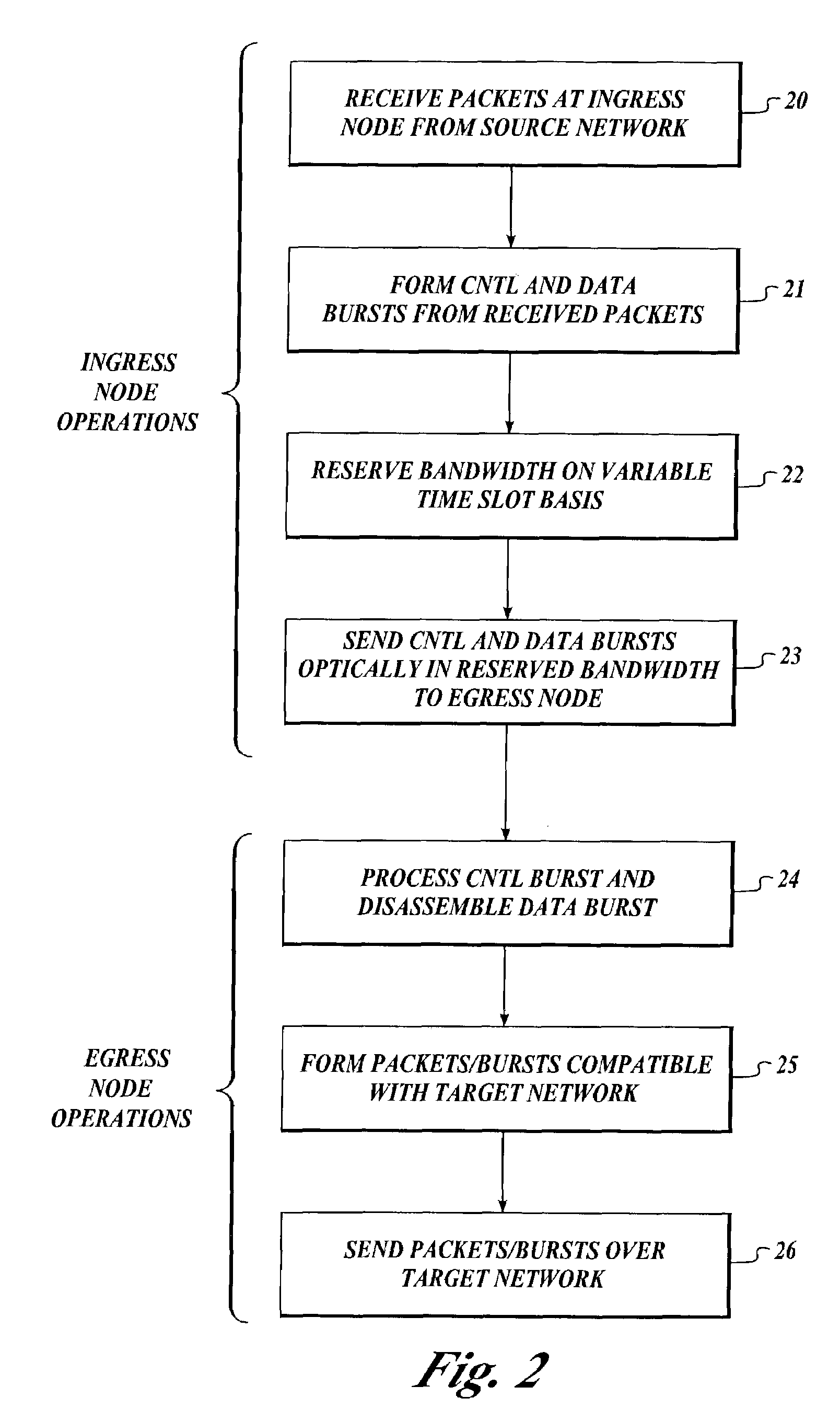Modular reconfigurable multi-server system and method for high-speed networking within photonic burst-switched network
a multi-server system and high-speed networking technology, applied in the field of optical networks, can solve the problems of slow operation, traffic bottleneck in the optical switched network, and the current optical switch technology cannot efficiently support “bursty” traffi
- Summary
- Abstract
- Description
- Claims
- Application Information
AI Technical Summary
Problems solved by technology
Method used
Image
Examples
Embodiment Construction
[0020]FIG. 1 illustrates a photonic burst-switched (PBS) network 10, according to one embodiment of the present invention. The term photonic burst is used herein to refer to statistically-multiplexed packets (e.g., Internet protocol (IP) packets or Ethernet frames) having similar routing requirements). A photonic burst typically includes a photonic label including the header and other routing information of the IP packets and a payload including the data segments of the packets.
[0021]This embodiment of PBS network 10 includes local area networks (LANs) 131-13N and a backbone optical WAN (not shown). In addition, this embodiment of PBS network 10 includes ingress nodes 151-15M, switching nodes 171-17L, and egress nodes 181-18K. PBS network 10 can include other ingress, egress and switching nodes (not shown) that are interconnected with the switching nodes shown in FIG. 1. The ingress and egress nodes are also referred to herein as edge nodes in that they logically reside at the edge ...
PUM
 Login to View More
Login to View More Abstract
Description
Claims
Application Information
 Login to View More
Login to View More - R&D
- Intellectual Property
- Life Sciences
- Materials
- Tech Scout
- Unparalleled Data Quality
- Higher Quality Content
- 60% Fewer Hallucinations
Browse by: Latest US Patents, China's latest patents, Technical Efficacy Thesaurus, Application Domain, Technology Topic, Popular Technical Reports.
© 2025 PatSnap. All rights reserved.Legal|Privacy policy|Modern Slavery Act Transparency Statement|Sitemap|About US| Contact US: help@patsnap.com



